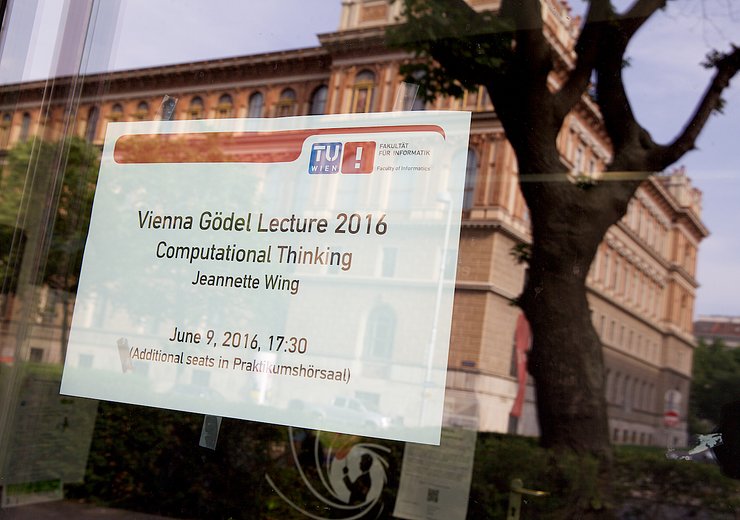“Computational Thinking”
Jeannette Wing explains why every child should learn to think computationally, and why this ability benefits society.

Picture: Nadja Meister / TU Wien Informatics
About
Jeannette M. Wing is Corporate Vice President at Microsoft Research. She is Adjunct Professor of Computer Science at Carnegie Mellon University where she twice served as the Head of the Computer Science Department. Her research interests are in the areas of trustworthy computing, specification and verification, concurrent and distributed systems, programming languages, and software engineering. Her current research is on the foundations of security and privacy.
Jeannette Wing, Corporate Vice President at Microsoft Research, has a vision for the 21st century: Computational Thinking will be a fundamental skill used by everyone in the world. To reading, writing, and arithmetic, we should add Computational Thinking to every child‘s analytical ability. Computational Thinking involves solving problems, designing systems, and understanding human behavior by drawing on the concepts fundamental to Computer Science. Thinking like a computer scientist means more than being able to program a computer. It requires the ability to abstract and thus to think at multiple levels of abstraction. In this year’s Vienna Gödel Lecture, Jeannette Wing gave many examples of Computational Thinking, arguing that it has already influenced other disciplines. She promoted the idea that teaching Computational Thinking cannot only inspire future generations to enter the field of Informatics but benefit people in all fields.
Humans Can Also Compute
Why Computational Thinking? Wing is convinced that this way of thinking leads to highly efficient problem-solving. She also pointed out that elements of Computational Thinking have already found their way into the curriculum of schools in several countries. By Computational Thinking, Jeannette Wing understands those thought processes by which a problem and its solution are formulated in such a way that a computer can effectively carry out this solution. The computer does not necessarily have to be a machine: “Humans can also compute,” says Jeannette Wing. The basis for this way of thinking is the ability to abstract. Through this, patterns can be found, whereby the solution to a specific problem can be generalized to be applied to many problems of a similar nature. The concepts of Computational Thinking include, for example, algorithms, data structures, and heuristics.
Multidisciplinary Approach
According to Wing, many fields of research benefitted from Computational Thinking: In biology, algorithms help to sequence the human genome faster. Cells as self-regulating systems can be seen as electric circuits, and biological networks look like Boolean networks. Machine Learning as a computational process is indispensable in astronomy, medicine, meteorology, and the neurosciences, among others. It is used by supermarket chains, credit card companies, and the entertainment industry to identify customer buying patterns and to make more efficient suggestions for future purchases. Engineering, healthcare, and business also use various computational techniques. For example, a Boeing 777 is tested by computer simulation instead of in a wind tunnel, principles of software design and debugging are used for more effective drug prescription, and automated mechanisms form the basis for e-commerce.
Links
Curious about our other news? Subscribe to our news feed, calendar, or newsletter, or follow us on social media.











